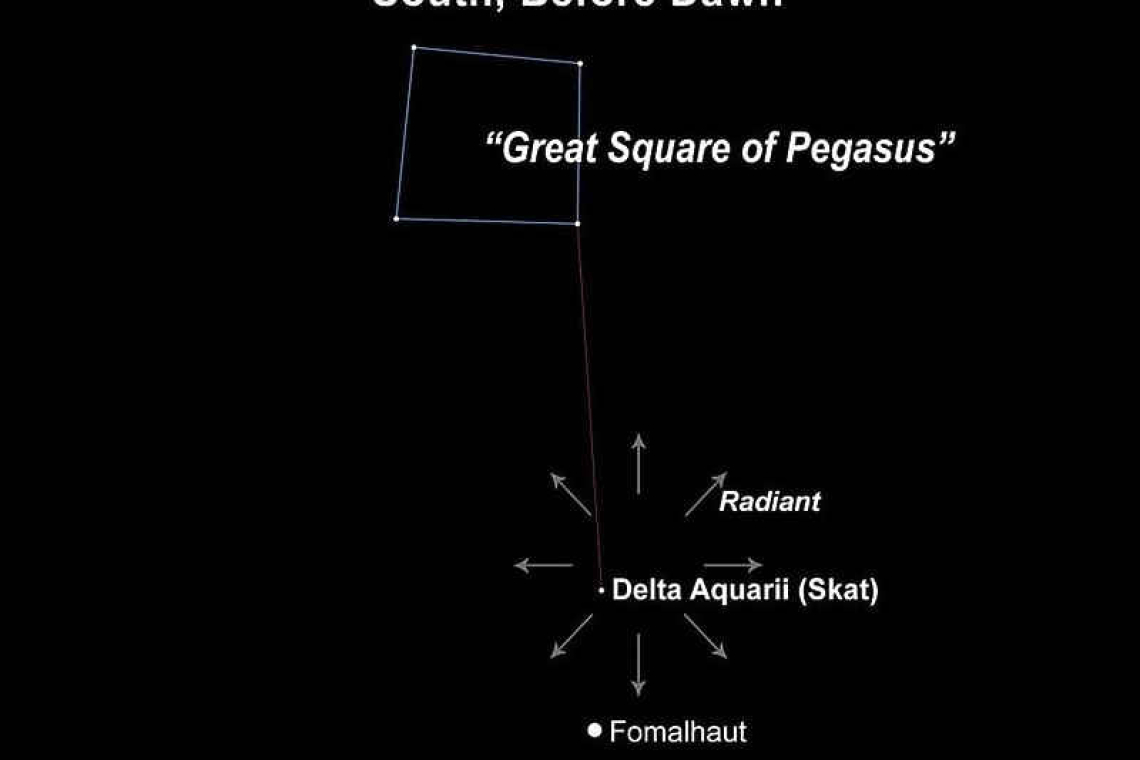~ St. Maarten’s Backyard Astronomy for July 12-14 ~
Sun rises at 5:44am
Sun sets at 6:51pm
Lunar phase: 2nd quarter, waxing half
Moon rises at noon
Moon sets at midnight
This weekend, we enter the season of meteorite showers. The season begins in mid- to late-July with the Delta Aquariids. Use the bright southern sky star Fomalhaut to guide you to the Delta Aquariid’s radiant point. Fomalhaut is known as the loneliest star because it is alone in a dark area of the southern sky, but currently the planet Saturn is traveling through Fomalhaut’s neighbourhood, so look for two bright lights rising from the east to the east-southeast horizon at about 11:00pm on Friday or about 11:30pm on Sunday.
The Delta Aquariids always peak in late July, but this year the night sky will be filled with the light of the waning gibbous moon, so the best time to watch for the Delta Aquariids is now until next weekend, and then be sure to look before the moon rises. The Delta Aquariids don’t really have a sharp peak, but instead they ramble along steadily from late July through early August, when eventually they overlap with another meteor shower in August, the Perseids.
The Delta Aquariids’ maximum sighting rate can reach 15 to 20 meteors per hour. Also, about 5% to 10% of the Delta Aquariid meteors leave persistent trains, or glowing ionized gas trails that last a second or two after the meteor has passed. If you’re watching in early August, you’ll typically see plenty of Delta Aquariids mixed in with the Perseids.
Interestingly, North American star gazers often dismiss the Delta Aquariids as well as the May Eta Aquariids, because they are so far south. These two showers are favoured by southern hemisphere star gazers, but, luckily, we here in the tropics are far enough south to catch the show.
Meanwhile, enjoy the parade of planets that is currently visible in our night skies. Early evening finds the planets Venus and Mercury in the western sky, following the sun’s path down to the horizon, although Venus is very close to the sun still, and so is likely difficult to spot. On the other side of the sky, Saturn rises in the east around 11:30 on Saturday night, while Jupiter is not visible during the dark hours for the time being.
Enjoy all the delights of the starry skies this weekend and keep looking up!
Thank you for keeping up with the Night Sky articles, backyard astronomy designed for St. Maarten sky viewing. FYI: If you are out later on in the week, note that each star rises about four minutes earlier each day than written here, and the moon rises 50 minutes later. Night Sky is researched and compiled by Lisa Davis-Burnett. Earthsky.org is a key resource for information and images. Questions or comments? Email This email address is being protected from spambots. You need JavaScript enabled to view it.







